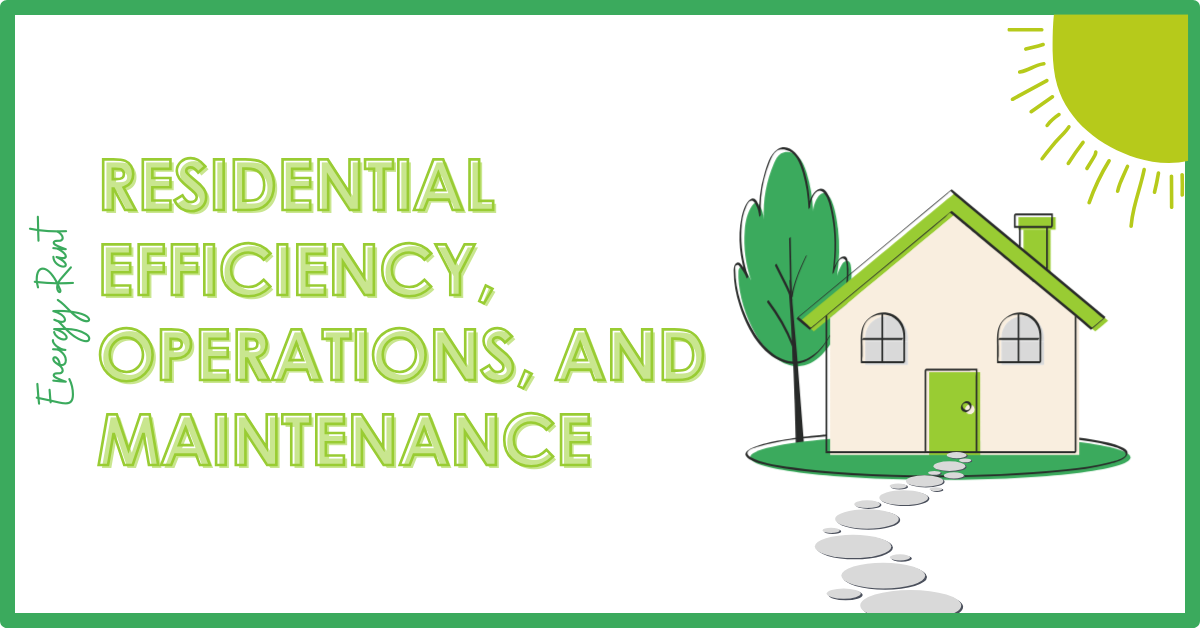
Last week, I received an email from the American Council for an Energy-Efficient Economy with the headline, Housing, Energy, and Consumer Groups Applaud Senate Opposition to Raising Energy Prices for Americans. “In a bipartisan vote today, the U.S. Senate rejected an amendment to block a federal proposal that will lower household costs by ensuring more new homes are built to up-to-date energy codes.” In other words, the Senate supports a federal proposal to lower household energy costs.
This additional quote hooked me, “Brand-new homes that waste energy saddle their residents with high bills for decades, so up-to-date codes are critical.”
Sadly, the market doesn’t care. I’ve been in the housing and investment arena for a long time. I invested a lot in my home after I purchased it, and there is zero chance I will get those dollars back when I sell. As they say, if you want ROI on home improvement, invest in kitchen and bathroom upgrades.
The infrastructure and efficiency investments I made include:
- A shiny new condensing boiler with reset controls. Speaking of code compliance, I wrote about it a couple of years ago. How’s that for irony?
- Cold climate heat pump rather than central air conditioning only – flex-fuel (i.e., hybrid), load management ready.
- Knee wall insulation.
- A new 2.5-car-plus garage.
- Roof replacement.
- Window replacement.
- Grading so water flows away from the house[1].
- Facia and trim wrapped with zero-maintenance aluminum.
- Backyard fence.
Wow – after taking inventory and doing some mental math, that was $120k in improvements to protect the asset and decrease energy costs. Will the next buyer give a damn? How many beds and baths, and what do the kitchen appliances look like? Uh, huh? No.
Home Valuation
Home valuation is heavily influenced by location (safety, proximity to schools, etc.), number of beds and baths, and the kitchen. Avoided operations and maintenance costs? Not so much. A tiny minority care about energy costs. It’s like a used car. The air conditioning system works today, but will it in a month? The roof doesn’t leak, and the shingles aren’t falling off today, but what about next year? Investments that avoid future surprises – like high energy bills or water dripping through the lighting fixture onto the living room table – are undervalued.
By the way, I’ve learned not to trust inspectors and assessors. They miss blatant facts, so I recommend learning what to look for and then spending a lot of time probing behind the scenes yourself, looking for telltale signs of trouble.
Thinking Like an Investor
As I learned in personal finance class back in college, assets are worth what someone else is willing to pay for them. I’m not talking about commodities but rather stocks and real estate. Commodities have intrinsic value. Markets set their value, and it does not need to be justified. Real estate and stocks come with much more speculation of earnings and value in the future.
For example, I recently chatted with a colleague about cropland prices. Here in the Midwest, rich farmland that can produce high crop yields runs up to $15,000 per acre or maybe even more. It’s insane. How is it insane? An excellent yield for corn may be 250 bushels per acre. The current price is about $4.50 per bushel for a revenue of $1,125 per acre. The revenue alone isn’t even 10% of the purchase price. There is no way that can pencil. Looking at it another way, cash rent for the same farmland is only about $250 per acre, 1.7% of the land’s value. Even in the zero-interest environment of the last decade, you can’t find financing near that rate. Conclusion: there is a ton of extrinsic value in this type of real estate, and the same thing goes for stocks and, to some extent, buildings.
Circling back to the ACEEE article, for sure, investors do not care about efficiency in buildings as they finance new developments and flip them to a market that has huge demand and little supply right now.
Another aside: Saturday, as my run wound down, I noticed a line of maybe twenty people at the front door of a home. I thought, what the heck is going on? Did someone die? Is this a wake? Is Elvis in there? No. It was a showing on a home for sale.
Rentals and Leasing
One way to make money on efficiency and investments like I made is to translate them into risk premiums and charge for them. As demonstrated over a decade ago, property owners can get tenants to pay for new appliances, HVAC, and envelope upgrades through the benefits of new appliances and guaranteed caps on utility bills. That leads to a higher cap rate and more cash.
Single Family Homes
Undoubtedly, it is more challenging to monetize efficiency in the market of single-family homes, especially as mortgage payments have soared to a point where utility bills don’t matter – like the split between cropland value and earnings potential through cash rent. As I found with the installation of my boiler, code compliance is an opportunity for new single-family homes. As importantly, homes need to be designed with grid flexibility in mind, especially for peak heating, which can take down the grid.
Summary
- Multi-family lease/rental properties need innovative market transformation to decrease costs for tenants and improve cash flow for investors.
- Single-family new home construction needs code compliance assistance and incentives for getting it right.
- All new construction needs incentives for grid resources – storage, load flexibility, and fuel flexibility.
[1] Rather than addressing symptoms of basement water leakage as some former owners did, fix source of the problem.
